Medieval Exhibitions listed according to the month they close
2025
APRIL
On the occasion of the 1,000th In 2024, on the anniversary of Emperor Heinrich II’s death, the city and diocese of Bamberg will celebrate Henry’s anniversary. One of the highlights of the program this year will be the exhibition “1,000 Years Ago” in the Bamberg Historical Museum in the Old Court. The special exhibition focuses not only on the emperor, but also on his wife Kunigunde and the people around her.
With scenographic productions and digital applications, guests immerse themselves in the everyday life of an imperial palace: they learn more about the building history of the Old Court, about the church and education or the everyday life of the soldiers. The exhibition also focuses on what was served at the imperial table and what scope of action women had during this time.
MARCH
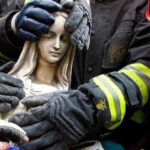 19.11.2024 – 16.03.2025 Rediscover the sculptures of Notre-Dame. At Musée de Cluny, Paris.
19.11.2024 – 16.03.2025 Rediscover the sculptures of Notre-Dame. At Musée de Cluny, Paris.
In 2022, the Cluny Museum launched a program studying and restoring of a selection of sculpted fragments and sculptures from the Notre-Dame de Paris Cathedral, carried out in partnership with the Centre for Research and Restoration of Museums of France ( C2RMF) and the Historical Monuments Research Laboratory (LRMH). The results of this work will be presented to the public in an exhibition devoted to the sculpted decoration of Notre-Dame at the time of its construction, from the mid-12th to the mid-14th century . In addition to the pieces usually exhibited, small-format fragments never before seen by the public will be added.
The history of Notre-Dame is not only that of its famous building; it is also that of books, manuscripts and printed matter which were used for worship or study. This exhibition offers a summary of the richness of the intellectual and artistic life of the cathedral during the Middle Ages and the multiplicity of interests of its numerous benefactors. It also highlights the key role played by the cathedral chapter in the management of books and the library. The exhibition presents about forty pieces, including around thirty medieval manuscripts preserved in the manuscript department and the Arsenal library (BnF) and around ten manuscripts, chapter registers and plans preserved in other institutions (The National Archives and The Historical archives of the archbishopric).
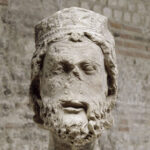 19.11.2024 – 16.03.2025 Making Stones Speak. Medieval Sculptures of Notre-Dame
19.11.2024 – 16.03.2025 Making Stones Speak. Medieval Sculptures of Notre-Dame
The Cluny Museum preserves a significant part of the sculpted medieval decoration of Notre-Dame Cathedral in Paris. These has not been the subject of an in-depth study since the early 1980s. The exhibition “Making Stones Speak. Medieval Sculptures of Notre-Dame” promises to renew knowledge about these collections, by revealing the results of the major study and restoration program carried out since 2022.
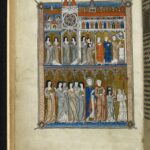 25.10.2024 – 02.03.2025 Exhibition on Medieval Women October at The British Library
25.10.2024 – 02.03.2025 Exhibition on Medieval Women October at The British Library
The exhibition, scheduled for October 2024–February 2025, will focus on recovering medieval women’s voices, visions and experiences. It will tell their history through their own words, show them through their own images, and uncover their lives through original manuscripts, documents and objects.
2024
DECEMBER
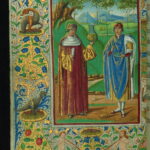 20.6.2024 – 15.12.2024 Healing the Body, Healing the Soul. Methods of Therapy in Medieval Europe at The Walters Art Museum, Baltimore MD, USA
20.6.2024 – 15.12.2024 Healing the Body, Healing the Soul. Methods of Therapy in Medieval Europe at The Walters Art Museum, Baltimore MD, USA
Divided into three sections which address physical healing, spiritual healing, and the interlinked nature of physical and spiritual health, works in the exhibition examine medical theories, medicine in practice, saints and health, pilgrimage, and spiritual exercise. Featuring 23 works, visitors will see rare books and manuscripts from the Walters library along with medieval objects.
NOVEMBER
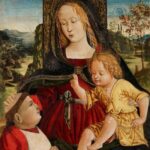 18.5.2024 – 3.11.2024 Bellissimo! Italienische Malerei at the Lindenau-Museum Altenburg
18.5.2024 – 3.11.2024 Bellissimo! Italienische Malerei at the Lindenau-Museum Altenburg
Magnificent golds and bright colors, elegant lines and refined artistic techniques – this is how precious Italian paintings by Fra Angelico, Guido da Siena or Sandro Botticelli inspire. They were created in famous art centers such as Florence or Siena. The exhibition shows the pictorial world of churches and private devotion, but also offers insights into the art of stately courts. The Lindenau Museum in Altenburg owns one of the most important collections of Italian paintings from the 13th to the early 16th century abroad. On the occasion of its renovation, the treasures are guests in Freiburg.
OCTOBER
20.04.2024 – 20.10.2024 The Abbey at Reichenau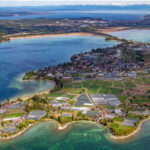
1300 years ago, the itinerant bishop Pirmin came to Lake Constance from Western Franconia. Likely, he founded the Abbey at Reichenau in AD 724, on the largest island in the Lake Constance. The first centuries of the monastery tell an impressive success story in which the Benedictine monastery was closely involved in the rule of the Carolingian and the Roman-German kings and emperors. The Reichenau Abbey had an empire-wide importance that can only be compared to the most important monasteries such as Saint-Denis or Fulda. The Great State Exhibition from April 20, 2024 will show the historical and cultural achievements of the Reichenau monks to a broad audience at two main locations on Lake Constance: The island of Reichenau, a UNESCO World Heritage Site since 2000. Visitors can experience the three medieval churches, the newly designed monastery gardens and the treasury through a modern guided tour system. In the Reichenau Museum, young and old can immerse themselves in the world of the Middle Ages. Spiritual offers should also help to make the aura of the “sacred island” tangible again. Read more about the Exhibition here
The Trésor d’Oignies is an extraordinary collection of goldwork from the 13th century , recognized as one of the seven wonders of Belgium. The exhibition ” Marveilleux Trésor d’Oignies: Shards of the 13th century ” presents for the first time outside Belgian territory almost the entirety of this collection: pieces of goldwork (especially reliquaries) and some textiles.
SEPTEMBER
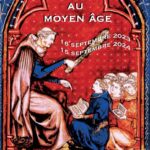 23.09.2023 – 23.09.2024 Schools in the Middle Ages. Tour Saint Jean Peur, Paris
23.09.2023 – 23.09.2024 Schools in the Middle Ages. Tour Saint Jean Peur, Paris
How long did schools go on? And what did the children learn? What were the schoolchildren’s materials? What about girls? What was the profile of the school master (or mistress)? At what age could one enter an apprenticeship? How was the education of young nobles carried out? What was a college in the Middle Ages? At what age might you enter a university? These are only some of the questions answered in this speical exhibiotion at the Tour Saint Jean Peur in Paris
AUGUST
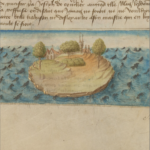 11.6. 2024 – 25.8.2024 The Book of Marvels. Wonder and Fear in the Middle Ages at the Jean Paul Getty Musem, Los Angeles CA, USA
11.6. 2024 – 25.8.2024 The Book of Marvels. Wonder and Fear in the Middle Ages at the Jean Paul Getty Musem, Los Angeles CA, USA
This exhibition explores the text and images of the Book of the Marvels of the World, a manuscript made in the 1460s that weaves together tales of places both near and far. Told from the perspective of a medieval armchair traveler in northern France, the global locations are portrayed as bizarre, captivating, and sometimes dangerously different. Additional objects in the exhibition highlight how the overlapping sensations of wonder and fear helped create Western stereotypes of the “other” that still endure today.
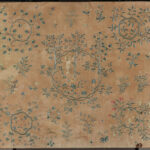 11.8.2023 – 4.8.2024 Liturgical Textiles from Late Medieval Germany at The Cleveland Museum of Art, Cleveland OH, USA
11.8.2023 – 4.8.2024 Liturgical Textiles from Late Medieval Germany at The Cleveland Museum of Art, Cleveland OH, USA
The Cleveland Museum of Art has a particularly rich selection of liturgical textiles (textiles used during religious ceremonies) from the Middle Ages (about 500–1500). In cathedrals, monasteries, and parish churches, liturgical textiles were used at many different points of church life.
JULY
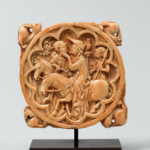 26.01.2024 – 07.07.2024 Gothic Ivory at the Schnütgen Museum in Cologne
26.01.2024 – 07.07.2024 Gothic Ivory at the Schnütgen Museum in Cologne
The Schnütgen Museum’s inventory of Gothic ivory carvings has been enriched with outstanding pieces in recent years, due to the support of private and public foundations as well as a donation. All of these new acquisitions were made during the heyday of the ivory trade around 1250 to 1350 and are shown in a small special show in the collection presentation.
Carved from elephant tusks, the works of art were extremely valuable due to the rare material. The raw material came to Europe as trade goods from the African east coast via the Red Sea and Egypt. Here it was initially France, with Paris as the center, that produced magnificent products. But the influences of the Parisian workshops reached further, including to Cologne. A relief depicting the death of Mary and two wings, which originally belonged to small travel or household altars and were used for personal devotion, are examples of the close artistic interconnection between Paris and Cologne in the Middle Ages. One of the counterparts to the two-winged altars is in the Musée du Louvre in Paris, the other is considered lost. In addition to the numerous sacred objects made of ivory, there are also luxury goods for secular use, such as combs, magnificent horns, dagger handles or mirror capsules. As extremely splendid examples, two such mirror capsules in the form of exquisite everyday objects expand the museum’s collection, which has previously been influenced by religion. The front sides, lavishly decorated with carvings, show representations from the subject of courtly love. The backs once included mirror panels made of polished metal, similar to pocket mirrors. These must-haves, which can still be found in many handbags today, were already highly valued by women in the Middle Ages.
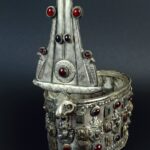 14.4.2024 – 21.7.2024 Africa & Byzantium at The Cleveland Museum of Art, Cleveland OH, USA
14.4.2024 – 21.7.2024 Africa & Byzantium at The Cleveland Museum of Art, Cleveland OH, USA
Africa & Byzantium considers the complex artistic relationships between northern and eastern African Christian kingdoms and the Byzantine Empire from the fourth century CE and beyond. The first international loan exhibition to treat this subject, the show includes more than 160 works of secular and sacred art from across geographies and faiths, including large-scale frescoes, mosaics, and luxury goods such as metalwork, jewelry, panel paintings, architectural elements, textiles, and illuminated manuscripts.
JUNE
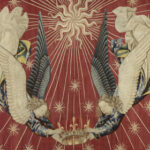 12.03.2024 – 16.06.2024 Art in France During the Reign of Charles VII. Musée de Cluny, Paris.
12.03.2024 – 16.06.2024 Art in France During the Reign of Charles VII. Musée de Cluny, Paris.
The reign of Charles VII (1422 – 1461) constitutes a pivotal moment in history and art history. It harbours the extraordinary artistic renewal of the late 15th century and foreshadows the beginnings of the Renaissance in France. In a period troubled by the final outbursts of the Hundred Years’ War, artistic creation is marked by a diversity of influences – between Flanders and Italy – and artistic expressions that the exhibition seeks to present. The exhibition is curated in a partnership with the Réunion des musées nationaux – Grand Palais. Exhibition organized with the exceptional collaboration of the Bibliothèque nationale de France. With the support of The Selz Foundation, The Ruddock Foundation for the Arts, la Fondation Etrillard, and The New York Medieval Society. Read more about the exhibition here
From 6 March to 30 June 2024, The Al Thani Collection at the Hôtel de la Marine, Paris, presents A Taste for the Renaissance: a dialogue between collections, the second in a series of three exhibitions held in collaboration with the Victoria and Albert Museum, London. This exhibition celebrates the extraordinary innovation and the technical virtuosity of Renaissance art, and explores its enduring appeal to collectors through the ages.
With more than 130 works of art from the Victoria and Albert Museum and The Al Thani Collection on display throughout all four galleries, the exhibition comprises sculpture, metalwork, jewellery, glass, textiles, books, manuscripts, paintings, works on paper and exotica, many of which have never previously been shown in Paris. This includes works by Antico, Lucas Cranach the Younger, François Clouet, Vittore Crivelli, Donatello, Nicholas Hilliard, Hans Holbein the Younger and Leonardo da Vinci, together with treasures and objets d’art created for noble and royal patrons by many of the most accomplished artists of the period.
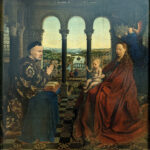 20.03.2024 – 17.06.2024 A New Look on the madonna of Chancellor Rolin by Van Eyck at Louvre
20.03.2024 – 17.06.2024 A New Look on the madonna of Chancellor Rolin by Van Eyck at Louvre
The Louvre has decided to dedicate the first spotlight exhibition to be held in the Salle de la Chapelle since 2014 to Jan van Eyck’s masterpiece, the Madonna of Chancellor Rolin. This exhibition is intended as a public celebration of the impressive conservation work carried out on the painting at the Centre for Research and Restoration of the Museums of France – the first intervention of its kind since the painting entered the museum in 1800. The Rolin Madonna illustrates the tensions between medieval tradition and revolutionary experimentation that pervaded Flemish art in the first third of the 15th century. Yet, exhibiting Van Eyck’s work alongside that of his contemporaries allows us to make some telling comparisons which help pinpoint his work’s originality as much as its belonging to a particular era, and enhance our understanding of the exchanges between Van Eyck and other artists of his day.
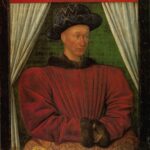 11.03.2024 – 16.06. 2024 Art in the time of Charles VII. Musée de Cluny, Paris.
11.03.2024 – 16.06. 2024 Art in the time of Charles VII. Musée de Cluny, Paris.
Charles the VII is known for his role in the drama of Jeanne d’Arc. However, he is also known for the arts and crafts with which he surrounded himself. especially the art of Jean (or Jehan) Fouquet (c. 1420–1481), a French painter and miniaturist.
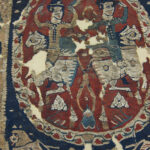
17.11.2023 – 9.6.2024 Rich in Blessings. Women, Wealth, and the Late Antique Household. Dumbarton Oaks, Washington DC, USA
‘Rich in Blessings: Women, Wealth, and the Late Antique Household’ […] explores the multilayered associations of art, wealth, and inequality in late antiquity, prompting consideration of the enduring meaningfulness of these themes in our own world and in museum collections today
MAY
 On the occasion of the 1000th anniversary of the death of its founder, Henry II (Heinrich II) the Bamberg Diocese is dedicating itself to the symbol of the cross. The outstanding highlight of the special exhibition at the Diocese Museum is the Fritzlar Heinrichskreuz, which can now be seen in Bamberg for the first time. The magnificent gemstone cross, richly decorated with sheet gold and precious stones, once a symbol of power and faith, along with other historical objects, enters into a fascinating dialogue with contemporary crosses. Modern artists interpret the religious motif not only as a symbol of faith, but also as a sign and subject of existential questions, economic and political interests. The special exhibition highlights the changes in the meaning of the cross over the last 1000 years. The exhibition is presented in the barrier-free special exhibition area of the DiözesanMuseum Bamberg. A publication and a cultural education program accompany this exhibition in the commemorative year of the diocese’s founder, Henry II.
On the occasion of the 1000th anniversary of the death of its founder, Henry II (Heinrich II) the Bamberg Diocese is dedicating itself to the symbol of the cross. The outstanding highlight of the special exhibition at the Diocese Museum is the Fritzlar Heinrichskreuz, which can now be seen in Bamberg for the first time. The magnificent gemstone cross, richly decorated with sheet gold and precious stones, once a symbol of power and faith, along with other historical objects, enters into a fascinating dialogue with contemporary crosses. Modern artists interpret the religious motif not only as a symbol of faith, but also as a sign and subject of existential questions, economic and political interests. The special exhibition highlights the changes in the meaning of the cross over the last 1000 years. The exhibition is presented in the barrier-free special exhibition area of the DiözesanMuseum Bamberg. A publication and a cultural education program accompany this exhibition in the commemorative year of the diocese’s founder, Henry II.
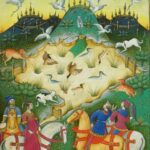 14.02.2024 – 27.05.24 Bestiaries from the Middle Ages. Chantilly, France
14.02.2024 – 27.05.24 Bestiaries from the Middle Ages. Chantilly, France
In the Très Riches Heures du Duc de Berry calendar, animals are present on all pages. Delving into the bookstacks at Chantilly, it appears the rich medieval collections offer a rich and varied repertoire of animal themes. Companion of man since creation, the animals in medieval books constitute a bestiary full of humanity and poetry. Around thirty manuscripts and incunabula are offered for admiration.
The Cabinet des Livres is also a stakeholder in the Sublimes Animaux project, the first collaborative virtual exhibition orchestrated by the Armarium, the digital library of the written, graphic and literary heritage of Hauts-de-France. This virtual exhibition which highlights the medieval bestiary is accessible to all with fun sections for children. During the first months of 2024, the treasures of Chantilly presented online are also on display, in the sumptuous setting of the Cabinet des livres.
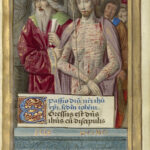 27.2.2024 – 19.5.2024 Blood. Medieval / Modern at The Getty Center, Los Angeles CA, USA
27.2.2024 – 19.5.2024 Blood. Medieval / Modern at The Getty Center, Los Angeles CA, USA
Blood has both fascinated and repelled generations of artists and viewers. Medieval manuscripts testify to a rich visual culture surrounding blood: devotional, medical, genealogical, and as evidence of violence. In examining the meanings of medieval blood, this exhibition extends to intersecting contemporary conversations—artists have used the potent visual connotations of blood to explore issues of feminism, HIV/AIDS, and the science of DNA. Medieval and modern approaches to the representation of blood offer instances of both connection and rupture across time
In may and June 2024 Genoa will be the Capital of the Middle Ages : a great cultural event will focus on the historical period that marked the beginning of the political and commercial affirmation of Genoa. At the center will be the grand openings of the Embriaci Tower and the restoration of the Grimaldina Tower . However, numerous other medieval sites in the city which are normally closed, are planned to open – towers, private houses, medieval loggias and churches. The openings will be accompanied by a narration of the history of the city with focus on navigation, trade, adventures and discoveries.
APRIL
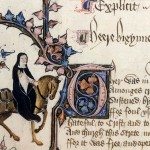 8.12.2023 – 28.4.2024 Chaucer Here and Now at St Lee Gallery, Weston Library, Bodleian Libraries, UK
8.12.2023 – 28.4.2024 Chaucer Here and Now at St Lee Gallery, Weston Library, Bodleian Libraries, UK
Chaucer Here and Now presents Geoffrey Chaucer as you haven’t seen him before. Not as the ‘Father of English Literature’, but as a dynamic, global author, whose works have been reworked and reinterpreted over time and around the world. Each generation reinvents Chaucer, taking inspiration from his work, and finding new meanings
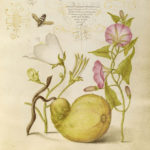 29.08.2023 – 02.04.2024 Graphic Design in the Middle Ages
29.08.2023 – 02.04.2024 Graphic Design in the Middle Ages
Medieval scribes and artists were some of the world’s first graphic designers, planning individual pages and whole books in creative ways. Exploring the idea of designing a medieval book, from the layout of the page to text as graphic organizing tool, and the role of ornament in the structure of the finished product, this exhibition reveals the ways that design influenced the reading and interpretation of medieval books.
MARCH
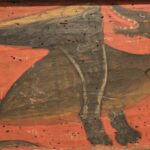 30.03.23 – 31.03.24 Beasts. Exhibition at The medieval Museum of Art in Barcelona
30.03.23 – 31.03.24 Beasts. Exhibition at The medieval Museum of Art in Barcelona
Medieval art is full of animals. Alone or accompanied by other beasts or humans; in isolated scenes or as part of longer narratives; perfectly drawn, deformed or fitted into a pre-established space to decorate it…, what are so many beasts doing in capitals, altarpieces and objects of all kinds? What do they mean? And how can we decipher them? Based on the richness of the MEV collections, this exhibition illustrates different aspects, modalities and intentions of the abundant presence of animals in medieval art, bringing us closer to the way of thinking and living of the men and women of the Middle Ages.
FEBRUARY
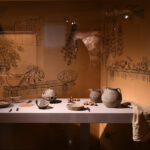 17.06.2023 – 05.02.2024 Septimania. Languedoc and Roussilon from Antiquity to the Middle Ages.
17.06.2023 – 05.02.2024 Septimania. Languedoc and Roussilon from Antiquity to the Middle Ages.
Between Romans, Visigoths, Arabs and Franks, the shifting territorial ensemble of Septimania is the geopolitical background of the exhibition “Septimania. Languedoc and Roussillon from Antiquity to the Middle Ages”. Focus is on the daily life of men and women who lived in this landscape as witnessed by archaeological excavations. The subject is turned towards the daily history of the men and women who cultivated and dominated these lands.Based on the presentation of approximately 200 objects, four major themes are chosen to illustrate the various aspects of society in the Early Middle Ages:
JANUARY
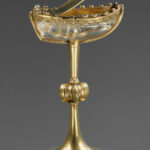
26.09.2023 – 14.01.204 Journey into the Crystal. At the Musée de Cluny
The exhibition will bring together artistic masterpieces from prehistory to contemporary art. The objects will illustrate the fascination aroused by the transparency of quartz in all civilizations, and particularly in the Middle Ages. The narration, chronological and thematic, will suggest dreamlike and fantastic universes underlining the multiple aspects of the aesthetic, scientific and spiritual power of rock crystal. The curators will be provided by Isabelle Bardiès-Fronty and Stéphane Pennec.
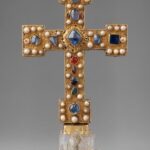 02.09.2023 – 07.01.2023 Glänzende Begegungen. Die Domschätze con Münster und Paderborn:
02.09.2023 – 07.01.2023 Glänzende Begegungen. Die Domschätze con Münster und Paderborn:
In the diocesan museum in Paderbon, the beatiful medieval treasures from the cathedrals in Münster and Paderborn are on show this winter.
2023
OCTOBER
Around AD 600, the Franks ruled Francia and the Rhineland. Who ere in charge of the kingdom? Whowere part of the political-military elite? And how did one live as a member of the upper class? Grave finds play a central role in the reconstruction of life in the early Middle Ages. More than fifty years ago, a spectacular find was made in Bislich on the Lower Rhine. The remains of an unusual warrior’s armor were found in a Frankish grave, also containing a golden signet ring with the name of its owner, BODI, and his portrait. The exhibition, “The Life of BODI” brings together the grave finds from the Lower Rhine with archaeological evidence from all over Europe. It presents the results of the latest research and provides fascinating insights into the life of a high-ranking Frankish warrior at the beginning of the Middle Ages, including a reconstruction of his armour.
SEPTEMBER
 30.03.2023 – 10.09.2023 Horizons: Migrations from Prehistory and into the Future
30.03.2023 – 10.09.2023 Horizons: Migrations from Prehistory and into the Future
Stepping into the unknown is an essential human experience – and part of every family history.
Nevertheless, the path to new horizons requires courage. Where to go? What to bring with you? In this exhibition, the Germanisches Nationalmuseum presents examples of people who set out for various reasons, including the children’s book author Judith Kerr and the artists Frank Auerbach and Gerhard Richter.The exhibition presents objects from its own and international collections, which tell the stories of migration, whether real or fictional. From the departure followed by the journey and to arrival , the exhibition explores the stages of migration, particularly in the 19th and 20th centuries. It ends with the moon landing as the goal of the future between science and fiction. However, the exhibition will also reach deep into our prehistory and visitors are invited to explore migrations from the Stone Age and into the future.
AUGUST
The exhibition the Musée de Antiquites highlights above all the complexity and richness of the links forged between Normandy and the rest of the world from in the 9th-12th centuries. More than 250 works are thus presented as so many milestones in the great epic of the Normans, builders of a Europe reaching from Scandinavia to England and all the way to Sicily. The exhibition was created together with the Reiss-Engelhorn Museum and was ealier shown there.
This exhibition examines the emergence of distinctly middle-class taste in late medieval England by showcasing a rare set of large-scale domestic sculptures from Exeter. Commissioned by a merchant named Henry Hamlyn, the sculptures, which adorned the exterior of his house, feature stock characters drawn from popular prints and bawdy tales: a jester, a quarreling couple, peasants, and musicians. Rustic in style and subject matter, they fascinatingly came across as figures both amusing and menacing.
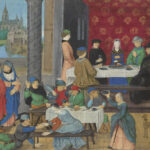 16.05.2023 – 06.08.2023 Play and Pastimes in the Middle Ages at The Getty Museum
16.05.2023 – 06.08.2023 Play and Pastimes in the Middle Ages at The Getty Museum
Discover the lighter side of life in the Middle Ages through the surprising and engaging world of medieval games and leisure. The exhibition features dynamic images of play and explores the role of entertainment in the Middle Ages. Manuscript images capture the complex contests and pastimes that medieval people enjoyed, ranging from a light-hearted game of chess to the dangerous sport of jousting. Then as now, play was thoroughly woven into the fabric of society at every level.
MAY
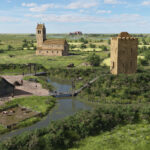 10.09.2022 – 07.05.2023 Tota Frisia at the Fries Museum
10.09.2022 – 07.05.2023 Tota Frisia at the Fries Museum
In the autumn, the Fries Museum presents an exhibition about the High and Late Middle Ages. The exhibition focuses on the former coastal area of the Wadden Sea and the medieval society of Tota Frisia. At that time, Friesland extended from the Zuiderzee to the Weser in Ostfriesland, Germany. In a landscape full of castles, churches and monasteries, the inhabitants chose their own judges, had their own language and a distinctive clothing style. The inspiration for this exhibition is the Fries Museum’s rich but unknown archaeological collection of medieval objects, which will be supplemented with (inter)national loans. With these objects as a guide, visitors will relive the years 1067-1567, from the time of violent feudal societies and wealthy monasteries to the devastating plague pandemic. This major exhibition links up seamlessly with the Fries Museum’s widely praised “We Vikings” exhibition in 2019.
APRIL
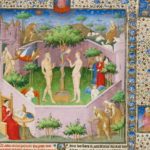 31.01.2023 – 23.04.2023 A Passion for Collecting Manuscripts at the Getty Museum
31.01.2023 – 23.04.2023 A Passion for Collecting Manuscripts at the Getty Museum
The Getty Museum is one of the few museums in the United States that maintains and displays a collection of medieval illuminated manuscripts. Portable and sumptuous, these hand-crafted treasures have garnered the interest of collectors throughout the centuries. Each has a unique story, and clues in the books themselves often provide tantalizing evidence that help reconstruct their meanderings through time. This exhibition shares intriguing stories about our manuscripts and the remarkable journeys that brought them to Los Angeles.
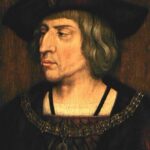 16.10.2022 – 16.4.2023 The Hapsburgs in the Middle Ages. The Rise of a Dynasty
16.10.2022 – 16.4.2023 The Hapsburgs in the Middle Ages. The Rise of a Dynasty
No major medieval history exhibition in Germany comparable to the important surveys of the Carolingians, Ottonians, Salians, Hohenstaufens and Wittelsbachs has ever explored the medieval imperial Habsburg dynasty. Speyer, the sole grave site of medieval Habsburgs outside Austria, is particularly suited among German museum and exhibition venues to trace the dynasty’s rise from Rudolf I to Maximilian I on the occasion of the 750th anniversary of Rudolf I’s accession to the throne.
Following the state exhibitions “Salians” (2011) and “Richard the Lionheart” (2017/18) shown at the Historical Museum of the Palatinate, the Habsburgs will make it possible to localize major history of the European Middle Ages in Speyer and the Palatinate once again.
The Habsburg dynasty shaped Europe’s fortunes for centuries. The family, known as the “House of Austria”, has its roots in southwestern Germany, though. Rudolf I, who in 1273 became the first Habsburg elected King of the Romans, laid the foundation for their rise from comital to imperial dynasty. Following his death in Speyer on July 15th 1291, he was laid to rest in the Imperial Cathedral of Speyer “where more of my ancestors are, who were also kings”
FEBRUARY
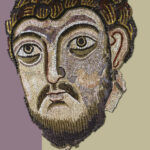 21.10.2022 – 05.02.2023 ROMA MEDIEVALE. Il volto perduto della città at the Museum of Rome
21.10.2022 – 05.02.2023 ROMA MEDIEVALE. Il volto perduto della città at the Museum of Rome
An exhibition to rediscover the lost face of Rome between the 6th and 14th centuries and its pivotal role in Christian and medieval Europe for both simple pilgrims and rulers and emperors. The exhibition itinerary, divided into 9 sections, with over 160 works including mosaics, frescoes and movable works, mainly from Roman public collections and places of worship, as well as from prestigious museum institutions such as the Musei Vaticani, was created with the aim of raising awareness of little-known aspects of the heritage of the Urbe. It starts with the discovery of the mediaeval city through its most iconic places, such as basilicas and palaces, but also through the environmental context, today profoundly modified, such as the course of the Tiber with ports and bridges where urban life and activities took place. The immersion in the reality of the Roman Middle Ages is then deepened by examining the rich patronage of popes and cardinals, the activity of artists and workshops, and the city’s fascination as an essential pilgrimage destination even for kings and emperors. Rich didactic apparatuses illustrate the many faces of the undisputed capital of medieval Europe in the exhibition.
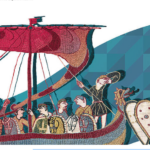 18.09.2022 – 26.02.2023 The Normans. At the Reiss-Engelhorn Museum in Mannheim, Germany
18.09.2022 – 26.02.2023 The Normans. At the Reiss-Engelhorn Museum in Mannheim, Germany
The history of the Normans continues to astonish and surprise to the present day: starting out as highly mobile warriors, mercenaries or minor aristocracy, Normans became powerful princes and rulers who left their traces all over Europe and beyond. Their history is a story of interconnectedness, which influenced in a long-lasting way the cultural and political development of Europe and the Mediterranean.
 07.09.2022 – 12.02.2023 Islam in Europe. In Hildesheim at the Dommuseum
07.09.2022 – 12.02.2023 Islam in Europe. In Hildesheim at the Dommuseum
The treasuries of European churches, including the Hildesheim Cathedral Treasury (a UNESCO World Heritage Site), preserve numerous artefacts from regions where the Islamic faith exercised a formative influence. Based on these objects, the grand special exhibition at the Hildesheim Cathedral Museum sheds light on shared achievements and cultural entanglements. With outstanding works on loan from international lenders, including pieces from Florence, London, Paris, and Vienna, it offers visitors a unique opportunity to explore a history that has direct bearing on contemporary concerns.
JANUARY
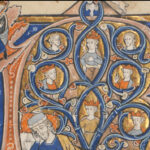 18.10.2022 – 22.01.2023 Medieval Britain in Colour: 500 Years of Illuminated Manuscripts
18.10.2022 – 22.01.2023 Medieval Britain in Colour: 500 Years of Illuminated Manuscripts
Medieval book artists – known as illuminators – were remarkable innovators. This focussed display charts the changing use of pigments and gold by British illuminators from tenth to the fifteenth century, looking at themes such as Discovery and Innovation, The Story of Blue, and Working with Gold.The 14 manuscripts on display are drawn principally from our own collections and include the Macclesfield Psalter and the Peterborough Psalter. Exceptional loans from Cambridge colleges, including the second volume of the Bury Bible from the Parker Library, are also on display.The manuscripts have been selected from over 70 that we have examined as part of an Arts and Humanities Research Council-funded research collaboration with Durham University, and several have their origins in our local region of East Anglia. The display showcases the pioneering contribution the Fitzwilliam’s heritage scientists and curators have made to manuscript studies.
2022
SEPTEMBER
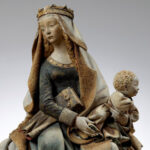 01.09.2022 The Art of Toulouse in the 14th century
01.09.2022 The Art of Toulouse in the 14th century
The exhibition will be organised together with the Musée des Augustins, Toulouse.
MAY
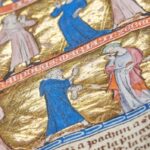 20.05.2022 -02.10.2022 Gold at the British Library
20.05.2022 -02.10.2022 Gold at the British Library
Dazzling beauty, striking resilience. Gold has long held the power to ignite feelings of awe and wonder across cultures. Take a journey around the globe to learn how gold elevated art in manuscripts and books. Discover the masterful techniques used to handle such a precious metal. Examine items that are hundreds of years old. Unveil the stories illuminated by gold in 50 of the most spectacular manuscripts in the collections of the british Libarry.
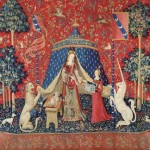 12.05.2022 Musee du Cluny – or the Medieval Museum in Paris – opens after three years of renovation
12.05.2022 Musee du Cluny – or the Medieval Museum in Paris – opens after three years of renovation
The Museum plans to host two special exhibitions per year. Musee du Cluny is one of two museums in the world, solely dedicated to the history and art of the Middle Ages. This spring, the main event will be the grand opening of the new museum
APRIL
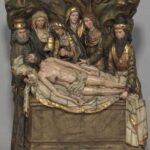 01.04.2022 – 01.10.2023 Middle Ages in Nüremberg. Late Medieval Art
01.04.2022 – 01.10.2023 Middle Ages in Nüremberg. Late Medieval Art
The National Museum in Nüremberg holds one of the largest collections of medieval art and artefacts from dayly life. In the next year, the museum plans to renovate the exhibition. Meanwhile visitors will have the opportunity to delve into twenty of the most precious object in the collection.
JANUARY
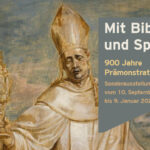 With Bible and Spades
With Bible and Spades
Magdeburg
10.09.2021 – 9.01.2022
In 1121, Norbert of Xanten founded the order of the Premonstratensians (Candidus et Canonicus Ordo Praemonstratensis) in Laon. Later, Norbert was called as archbishop to Magdeburg. He was a close friend of Bernard of Clairvaux and the new order was influenced by the ideals of the Cistercians. However, the Premonstratensians was an order of canons, and their work involved preaching and the exercising of pastoral ministry. In 1121, Magdeburg celebrates the 900-anniversary of the foundation with an exhibition at the Kulturhistorisches Museum Magdeburg. Parallel exhibitions will be held in the Library and gallery of the Strahov Monastery and at the Abdij van Park in Leuven
2021
DECEMBER
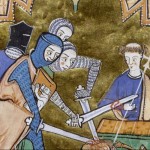 Thomas Becket 1120 – 1170
Thomas Becket 1120 – 1170
Canterbury Cathedral and Canterbury
11.12.2020 – 31.12.2021
2020 marks an important dual anniversary for the extraordinary figure of Thomas Becket. It will be 850 years since his dramatic murder on the 29th December 1170 in Canterbury Cathedral, and 800 years since his body was moved on the 7th July 1220 from a tomb in the crypt of the cathedral into a glittering shrine. The events of 1220 were orchestrated to relaunch the cult of Becket, and ensured that Canterbury became the principal pilgrimage destination in England and one of the major pilgrimage sites within Europe. The anniversary is marked by a series of conferences, events and exhibitions.
SEPTEMBER
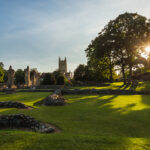 The Abbey of St Edmund: Artisan and Pilgrimage
The Abbey of St Edmund: Artisan and Pilgrimage
01.07.2021-30.0.9.2021
Myse’s Hall, Bury St. Edmund
A special exhibition entitled “The Abbey of St Edmund: Artisan and Pilgrimage” in the Liberty of St Edmund at Moyse’s Hall Museum from 1 July – 30 September 2020. The exhibition will showcase the beauty and gravitas of St Edmunds’ Abbey, as well as explore the people that travelled great distances to see the tomb of our martyred king.
Special events will see evening workshops for adults that show how crafts people created the beautiful carvings, stained glass and stonework, while craft workshops for younger explorers will run throughout the summer holidays, along with trails, sensory tours, treasure hunts and hands-on activities.
AUGUST
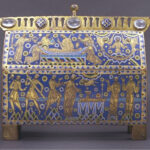 Thomas Becket: murder and the making of a saint
Thomas Becket: murder and the making of a saint
British Museum
22.04.2021 – 22.08.21
Becket was one of the most powerful figures of his time, serving as royal Chancellor and later as Archbishop of Canterbury. Initially a close friend of King Henry II, the two men became engaged in a bitter dispute that culminated in Becket’s shocking murder by knights with close ties to the king. The assassination of Thomas Becket, in Canterbury Cathedral, on 29 December 1170 changed the course of history.
Marking the 850th anniversary of this dramatic crime, this major exhibition will present Becket’s tumultuous journey from a London merchant’s son to Archbishop, and from a revered saint in death to a ‘traitor’ in the eyes of Henry VIII, over 350 years later. Get up close to the man, the murder and the legend through an incredible array of objects associated with Becket, including medieval stained glass, manuscripts, jewellery and sacred reliquaries. It will feature artefacts from the Museum’s collection as well as important loans from other major collections from the UK and around the world.
JUNE
 The World of Clovis. Merovingian Itenerary
The World of Clovis. Merovingian Itenerary
Mariemont
13.02.2021 – 13.06.2021
In spring 2021, Musée royal de Mariemont mounts an exhibition showing numerous pieces of arts and domestic objects discovered as part of archaeological exhibitions in the region. The exhibition presents a new synthesis of the remarquable period.
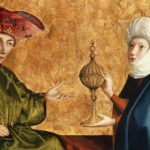 Late Gothic Art
Late Gothic Art
Berlin
19.02.2021 – 27.06.2021
Inspired by developments in the Netherlands, artistic means of expression began to change in the first half of the 15th century. Light and shade as well as body and space came to be depicted with increasing realism. With advances in printing techniques, these innovations also found mass distribution. A major exhibition at the Gemäldegalerie in Berlin. Some of the masterpieces are available for perusal at the Google site: Arts & Culture
APRIL
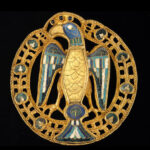 Kaiserjahr 2020
Kaiserjahr 2020
Mainz and elswhere in the RheinlandPfalz
09.09.2020 – 18.04.2021
The Emperors and the Five pillars of their Power Bastion. A series of exhibitions and events throughout RheinlandPfalz, organised to explore the Imperial powers from Charlemagne to Fredric Barbarossa. The “Year of the Emperors” opens on the 26th of April on the Imperial Castle at Trifels.
MARCH
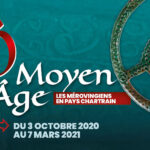 Ô Moyen Âge. Les Merovingiens en pays Chartrain
Ô Moyen Âge. Les Merovingiens en pays Chartrain
Chartres
03.10.2020 – 07.03. 2021
The exhibition shows the development of Chartres and the surrounding countryside in the Merovingian period from the 5th to the 8th century. The exhibition focus on the recent archaeological finds in the region.
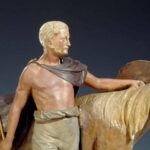 The Germanic Tribes – Archaeological Perspectives
The Germanic Tribes – Archaeological Perspectives
Berlin
18.09.2020 – 21.03.2021
For the first time, the Germanic tribes will be the focus of a large-scale archaeological exhibition. In collaboration with the LVR-Landesmuseum Bonn, the Museum für Vor- und Frühgeschichte in Berlin is showing the special exhibition: The Germanic Tribes: Archaeological Perspectives. In the James-Simon-Galerie – which is reopening its doors to host the exhibition – more than 700 exhibits will be on display, including numerous new finds and outstanding loans from across Germany, Denmark, Poland and Romania. Parallel to this, The Neues Museum will present the shifting history of research into the Germanic tribes and its reception as well as the construction of the Germanic Myth.
2020
NOVEMBER
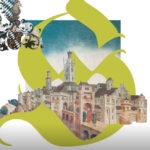 The History of the Wittelsbacher and Bayern
The History of the Wittelsbacher and Bayern
Wittelsbacher Castle, Friedberg and at the Feuerhaus in Aichnach.
29.04.2020 – 08.11.2020
The exhibition aims to show the history of Bavaria and the ruling dynasty of the Wittelsbacher in the Middle Ages from ca. 1200 – 1300. The first exhibition is traditional, while the second – at Aichach – aims to use multimedia at the forefront of the technological future.
OCTOBER
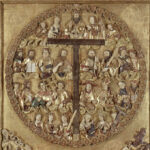 Helden, Märtyrer, Heilige. Wege ins Paradis
Helden, Märtyrer, Heilige. Wege ins Paradis
German National Museum, Nürnberg
11.04.2019 – 04.10.2020
Who were the Late Medieval heroes? How were they presented to the public? How did people identify themselves with these heroes, martyrs, and saints? These are the questions explored by the National Museum in Nuremberg in 2020.
AUGUST
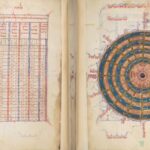 Hebrew Manuscripts
Hebrew Manuscripts
British Library, London
20.03.2020 – 02.08. 2020
Journey beyond the Bible to discover the history, culture and traditions of Jewish people from all corners of the world through the ages. Through rarely-seen treasures from as far back as the 10th century, this exhibition takes you from Europe and North Africa, through to the Middle East and China to explore the relationships between Jews and their neighbours in the communities that they lived in.
JULY
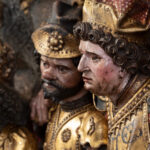 Meister Arnt of Kalkar and Zwolle
Meister Arnt of Kalkar and Zwolle
Schnütgen Museum, Cologne
02.04.2020 – 05.07.2020
The first monographic exhibition on the founder of a rich carver school on the Lower Rhine takes the visitors into the era of the late Middle Ages. About 50 works by the artist, who worked between about 1460 and 1492, will be shown. The late Gothic oeuvre of Meister Arnt captivates by extraordinary liveliness, richness of subject and narrative joy.
JUNE
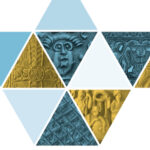 At the Beginning of the Middle Ages – Aux Sources du Moyen Âge 350 – 1000
At the Beginning of the Middle Ages – Aux Sources du Moyen Âge 350 – 1000
Musée cantonal d’archéologie et d’histoire at Lausanne
07.02.2020 – 28.06.2020
The exhibition will reveal the small and the big story of the period reaching from the end of Antiquity to the year 1000; a period, which remains poorly known to the public. Spanning from late Antiquity, the names of the Burgundians, Alamans and Franks may evoke vague memories of school and numerous clichés such as the barbarian invasions having ravaged cities and countryside, casuing famines and diseases and destroying for a long time all traces of civilization. The development of archeology of the High Middle Ages for more than forty years now, in Switzerland as ell as in France, today allows for a fundamental revision. Visitors will have the opportunity to discover the richness and diversity of the artefacts from this period preserved in the chosen region, which covers the cantons of Valais, Vaud and Geneva, as well as part of those of Friborg, Neuchâtel and of the Jura.
MAY
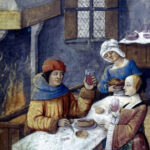 Set the Table in the Middle Ages
Set the Table in the Middle Ages
Tour Jean Sans Peur, Paris
08.01.2020 – 10.05.2020
APRIL
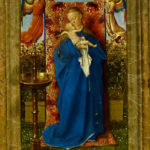
Van Eyck. An Optical Illusion.
Ghent MSK
01.02.2020 – 30.04.2020
Worldwide, only approximately twenty works by Van Eyck have been preserved. Quite exceptionally, over half of these will travel to Ghent in 2020 for the exhibition ‘Van Eyck. An optical revolution’ at the Museum of Fine Arts (MSK). In what promises to be an unmissable, tour de force of an exhibition, the world of Van Eyck and his revolutionary gaze will be brought to life like never before.
MARCH
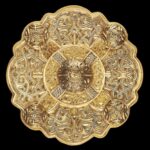 Crossroads
Crossroads
Travelling through Middle Ages
Art & History Museum, Brussels
27.09.2019 – 29.03.2020
The fall of the Roman Empire set Europe on a declining path. That is, at least, what the classic version of the story about the Early Middle Ages tells us. Indeed, this period which extends from 300 to 1000 A.C. is also known as the ‘Dark Ages’. The Crossroads exhibition invites you to travel through the Early Middle Ages and to reconsider the classic version of this period of History which was, in reality, fascinating. Visit the exhibition to meet the Avars, the Francs, the Merovingians, the Byzantines, the Egyptians and the Vikings.
FEBRUARY
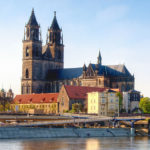 Fascination of the City
Fascination of the City
Kulturhistorisches Museum Magdeburg
01.09.2019 – 02.02.2020
The exhibition aims to showcase the medieval city as a cultural hotspot gathering exotica and precious pieces of art in the wake of the trade and commerce. Highlights are the four extant manuscripts of the Sachsenspiegel – from Oldenburg, Heidelberg, Wolfenbüttel and Dresden. One of the most important books of law from the high Middle Ages, the lush illuminations in the manuscripts offer numerous inroads into the daily life in the 13thcentury.
JANUARY
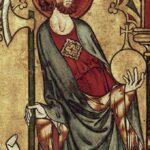 North & South
North & South
European Masterpieces reunited
25.10.2019 – 26.01-2020
This autumn, Museum Catharijneconvent presents the exhibition North & South: European masterpieces reunited. As it turns out, both the far North and far South of Europe medieval masterpieces have survived that are remarkably similar despite the great distance that separates them. We succeeded in having these rare works of art from the period 1100-1350 travel on this single occasion from Catalonia (Spain) and Norway to Utrecht. From 25 October 2019 until 26 January 2020 visitors will be able to enjoy their astonishing beauty and similarity in style. It will be an absolute ‘must see’ because art from this early period has hardly survived in Central Europe.
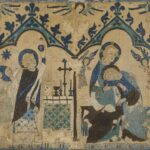 The Art Of Embroidery
The Art Of Embroidery
Musée du Cluny, Paris
24.10.2019 – 20.01.2020
Embroidery with silk, gold and silver threads is one of the most precious and prestigious arts of the Middle Ages. And yet, these works are little known today.
The museum has one of the most beautiful collections of embroidery from the 12th to the 16th century in the world. This exhibition is an opportunity to let them interact with other masterpieces from international collections.
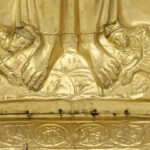 Gold & Ruhm – Geschenke für die Ewigkeit
Gold & Ruhm – Geschenke für die Ewigkeit
Historischen Museums Basel
11.10.2019 – 10.01.2020
This year, the Basel Minster marks its 1000th anniversary with a major exhibition showcasing the cultural history of the reign of Henry II, the last Ottonian emperor
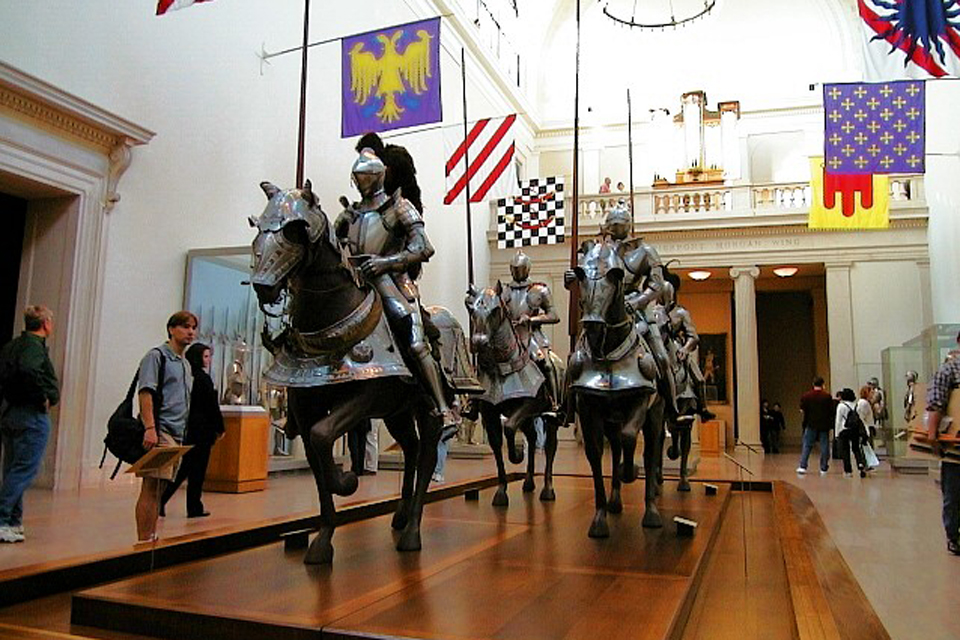
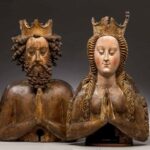 25.10.2024 – 27.04.2025 A thosand years ago: Life at the court of Kunigunde and Henry II. Bamberg, several locations
25.10.2024 – 27.04.2025 A thosand years ago: Life at the court of Kunigunde and Henry II. Bamberg, several locations 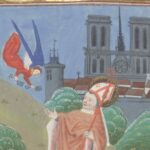 19.11.2024 – 16.03.2025 The medieval library of Notre-Dame de Paris: medieval treasures from the National Library of France and the National Archives. At Musée de Cluny, Paris
19.11.2024 – 16.03.2025 The medieval library of Notre-Dame de Paris: medieval treasures from the National Library of France and the National Archives. At Musée de Cluny, Paris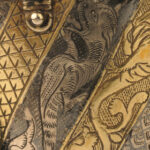 19.3.2024 – 20.10.2024 Merveilleux trésor d’Oignies. Éclats du 13esiècle at Musée de Cluny, Paris / Musée provincial des Arts anciens du Namurois, Namur, France
19.3.2024 – 20.10.2024 Merveilleux trésor d’Oignies. Éclats du 13esiècle at Musée de Cluny, Paris / Musée provincial des Arts anciens du Namurois, Namur, France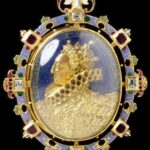
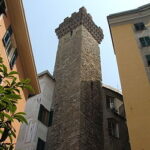
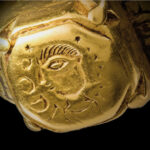 23.03.2023 – 15.10-2023 The life of the BODI. A journey of discovery into the early Middle Ages and the Rhineland c. AD 600
23.03.2023 – 15.10-2023 The life of the BODI. A journey of discovery into the early Middle Ages and the Rhineland c. AD 600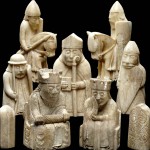 14.04.2023 – 13.08.2023 Normans, Migrants, Conquerors, and Innovators. Exhibition about Normans at Musée du Antiquités, Paris.
14.04.2023 – 13.08.2023 Normans, Migrants, Conquerors, and Innovators. Exhibition about Normans at Musée du Antiquités, Paris. 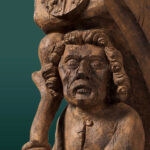 06.03.2023 – 20.08.2023 Rich Man, Poor Man: Art, Class, and Commerce in a Late Medieval Town at the Met Cloisters
06.03.2023 – 20.08.2023 Rich Man, Poor Man: Art, Class, and Commerce in a Late Medieval Town at the Met Cloisters